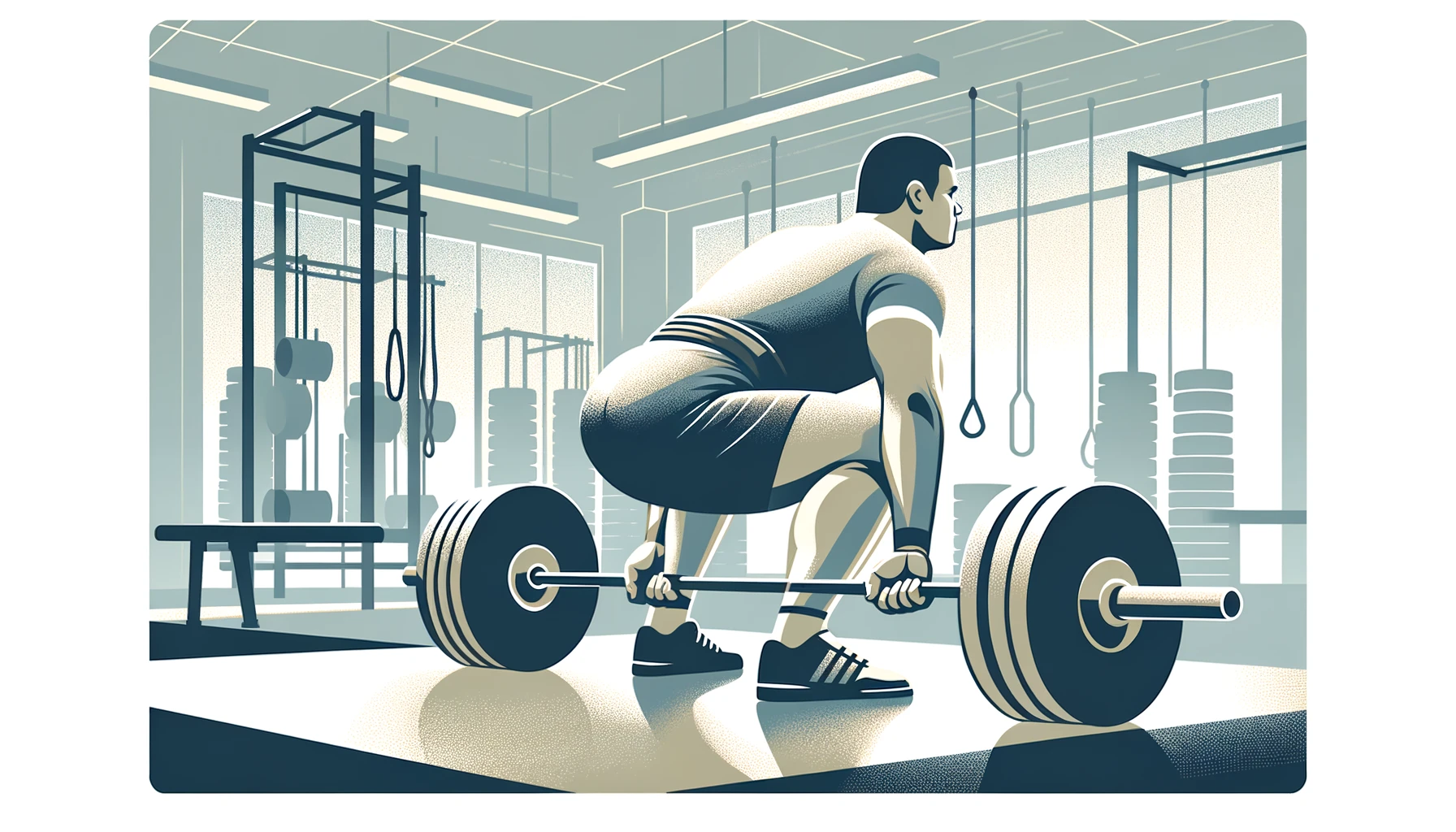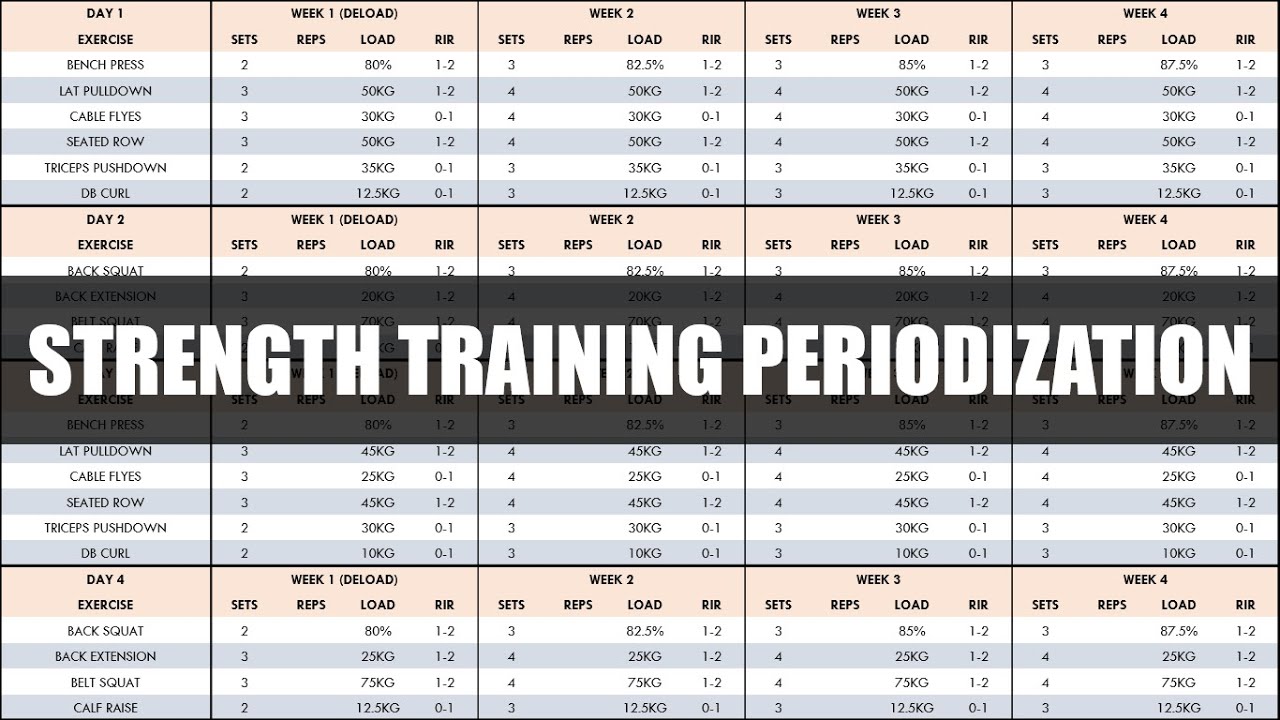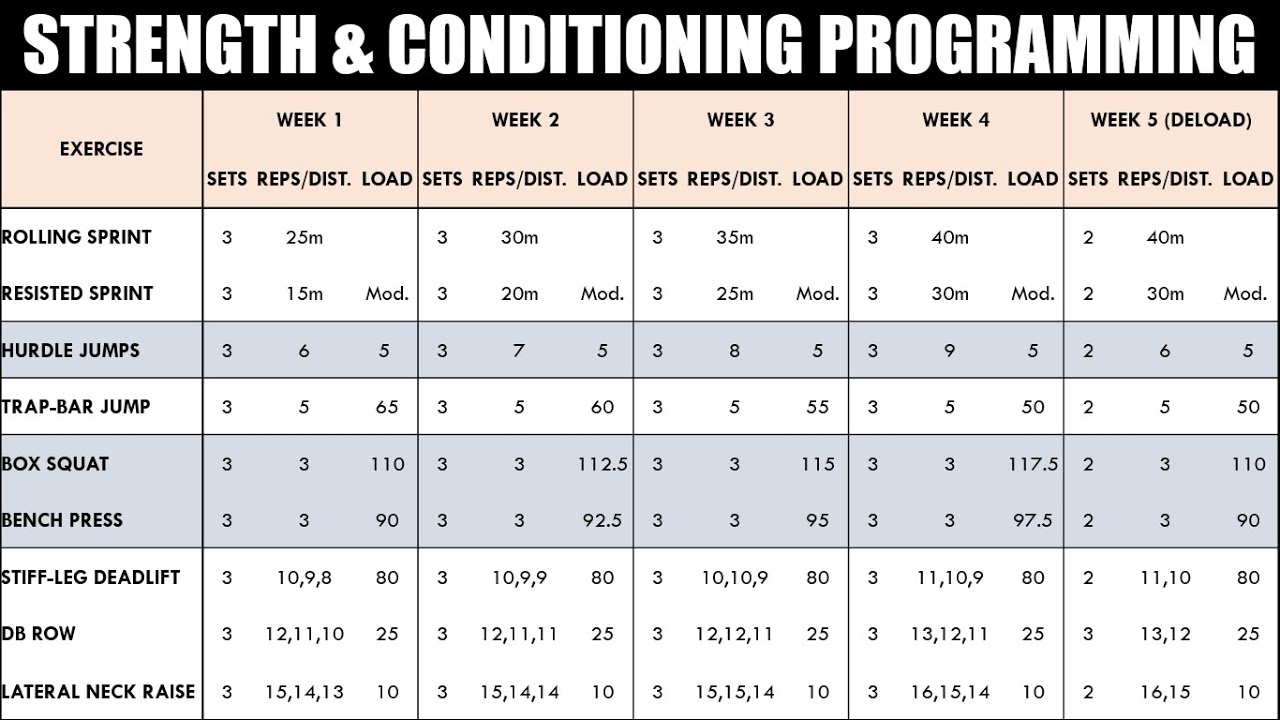Advanced Strength Training Program for Experienced Weightlifters: Forget wimpy beginner workouts! This isn’t your grandpappy’s bicep curl routine. We’re diving headfirst into a 12-week odyssey of iron-bending, muscle-sculpting glory, designed to push seasoned lifters beyond their perceived limits. Prepare for a journey that blends scientific periodization with the raw power of progressive overload, all seasoned with a dash of strategic exercise variation to keep those gains coming.
We’ll tackle everything from optimizing your nutrition and recovery to conquering mental hurdles and avoiding those pesky plateaus. Get ready to unleash your inner beast!
This program isn’t just about bigger muscles; it’s about building a sustainable, injury-resistant approach to strength training. We’ll explore different periodization methods, carefully select exercises to target specific muscle groups, and provide variations to prevent stagnation. Crucially, we’ll emphasize the importance of meticulous progress tracking, smart adjustments based on your body’s feedback, and strategies for managing fatigue and preventing overtraining.
Think of it as your personalized roadmap to becoming an even more formidable lifter.
Program Design Principles for Experienced Lifters
So, you think you’re tough? You’ve conquered the newbie gains, shrugged off the plateau of mediocrity, and now you’re ready to unleash your inner beast. Welcome to the advanced realm of strength training, where the gains are harder-won, the pain is more glorious, and the bragging rights are exponentially more impressive. This program isn’t for the faint of heart (or the weak of bicep).This section will delve into the crucial principles that will sculpt your physique into a monument to dedication and hard work.
We’ll be examining periodization, rep ranges, set numbers, rest periods, and, of course, the ever-important progressive overload – the key to unlocking your true strength potential. Prepare for a journey that will challenge your limits and leave you utterly exhilarated (and possibly slightly sore).
Sample 12-Week Advanced Strength Training Program
This program utilizes a combination of linear and undulating periodization, tailoring the training stimulus to maximize strength gains over the 12-week period. It focuses on compound movements to build a solid foundation, complemented by accessory exercises for muscle hypertrophy and injury prevention. Remember, this is asample* program. Adapt it to your individual needs, weaknesses, and recovery capabilities.
| Week | Training Focus | Example Workout (adjust based on your preferred split) |
|---|---|---|
| 1-4 (Hypertrophy Phase) | Higher volume, moderate intensity | Squats (3×8-12), Bench Press (3×8-12), Deadlifts (1×5, 1×3, 1×1), Overhead Press (3×8-12), Pull-ups (3×8-12), Rows (3×8-12) |
| 5-8 (Strength Phase) | Lower volume, higher intensity | Squats (5×3-5), Bench Press (5×3-5), Deadlifts (1×5, 1×3, 1×1), Overhead Press (5×3-5), Pull-ups (3×5-8), Rows (3×5-8) |
| 9-12 (Power Phase) | Focus on speed and explosive movements | Squats (3×3, emphasizing speed), Bench Press (3×3, emphasizing speed), Deadlifts (1×3, 1×2, 1×1), Overhead Press (3×3, emphasizing speed), Plyometrics (Box Jumps, Depth Jumps), Olympic Lifts (Power Cleans, Snatch variations – if experienced) |
Rationale Behind Rep Ranges, Set Numbers, and Rest Periods
The rep ranges, set numbers, and rest periods are strategically chosen to target specific training adaptations. Higher rep ranges (8-12) in the hypertrophy phase promote muscle growth, while lower rep ranges (3-5) in the strength phase prioritize maximal strength development. The power phase incorporates lower reps with an emphasis on speed and explosive movements. Rest periods are adjusted accordingly: longer rests (3-5 minutes) for heavy compound lifts, and shorter rests (60-90 seconds) for accessory exercises.
This variation ensures optimal stimulus for different training goals.
Importance of Progressive Overload in an Advanced Program
Progressive overload is the cornerstone of any successful strength training program, but it’s particularly crucial for experienced lifters. Simply put, you must consistently challenge your muscles to adapt and grow stronger. This can be achieved by gradually increasing weight, reps, sets, or decreasing rest periods. For example, if you successfully completed 5 sets of 5 reps on the bench press last week, aim for 5 sets of 6 reps this week, or increase the weight slightly.
Another example: if you consistently hit your target reps, shorten your rest periods by 15 seconds. Ignoring progressive overload is like trying to climb a mountain with your hands tied behind your back – you’ll get nowhere.
Linear Periodization vs. Undulating Periodization
Linear periodization follows a systematic progression, gradually increasing intensity over time. This is a classic approach, ideal for building a strong base. Undulating periodization, on the other hand, involves fluctuating training variables (volume, intensity, rest) within a week or even a single workout. This approach keeps the body guessing and can be highly effective for advanced lifters who have already established a solid foundation.
Obtain direct knowledge about the efficiency of best exercises for building overall body strength and power through case studies.
This program utilizes a blended approach, incorporating elements of both to optimize strength gains and prevent stagnation. Think of linear periodization as a steady climb, while undulating periodization is more like a challenging, but ultimately rewarding, mountain bike ride.
Exercise Selection and Variation: Advanced Strength Training Program For Experienced Weightlifters

Let’s face it, lifting the same old weights in the same old way gets…well, old. To keep your gains growing and your training interesting, you need a strategic approach to exercise selection and variation. This isn’t about reinventing the wheel; it’s about adding some seriously awesome spokes and maybe even a turbocharger to your fitness engine.
Experienced lifters need more than just a basic barbell bench press; they crave a symphony of muscle stimulation, a ballet of barbell brutality. This section details the advanced compound exercises crucial for continued progress, along with smart variations to keep your muscles guessing (and growing).
Advanced Compound Exercises for Experienced Lifters
The following exercises are categorized by the primary muscle group worked. Remember, even seemingly minor variations can significantly alter muscle activation and training stimulus. Think of it as a delicious culinary adventure for your muscles – the same ingredients, but with wildly different flavors.
- Chest: Incline Dumbbell Press (variation: Decline Dumbbell Press, Cable Crossover variations), Weighted Dips (variations: Close-grip, Wide-grip, using chains or bands for increased resistance), Chest-Supported Dumbbell Press (variation: using different angles/incline).
- Back: Pull-ups (variations: Wide-grip, Close-grip, Chin-ups, Australian Pull-ups), T-Bar Rows (variations: altering grip width, using different handles), Pendlay Rows (variation: Romanian Deadlift variation with emphasis on back), Barbell Rows (variation: changing grip width, using different variations like Yates rows).
- Legs: Front Squats (variation: Back Squats, Goblet Squats, Zercher Squats), Romanian Deadlifts (variation: Stiff-legged Deadlifts, Good Mornings), Bulgarian Split Squats (variation: Walking Lunges, Reverse Lunges), Leg Press (variation: changing foot placement, adding bands or chains).
- Shoulders: Overhead Press (variation: Arnold Press, Z-Press, Push Press), Lateral Raises (variation: Front Raises, Reverse Flyes, using cables), Barbell Shrugs (variation: Dumbbell Shrugs, Trap Bar Shrugs).
Workout Split for Experienced Lifters
A well-structured workout split maximizes recovery and allows for sufficient training volume. This program uses a 4-day upper/lower split, prioritizing compound movements.
This split allows for sufficient rest between sessions targeting the same muscle groups, promoting muscle growth and reducing injury risk. The frequency allows for consistent stimulus without overtraining. The pairing of muscle groups allows for a balance of pushing and pulling movements, ensuring overall strength and development.
| Day | Muscle Group Focus | Example Exercises |
|---|---|---|
| Monday | Upper Body Push | Incline Dumbbell Press, Overhead Press, Weighted Dips |
| Tuesday | Lower Body | Front Squats, Romanian Deadlifts, Bulgarian Split Squats |
| Wednesday | Rest | Active Recovery (light cardio, stretching) |
| Thursday | Upper Body Pull | Pull-ups, T-Bar Rows, Face pulls |
| Friday | Lower Body | Leg Press, Good Mornings, Hamstring Curls |
| Saturday & Sunday | Rest | Complete rest or light activity |
The Importance and Examples of Accessory Exercises
While compound exercises form the bedrock of your program, accessory exercises are the crucial supporting structures. They target specific muscle groups, enhance weaknesses, and prevent imbalances. Think of them as the finishing touches on a masterpiece – subtle but essential.
- Chest: Cable Flyes, Dumbbell Flyes
- Back: Face pulls, Lat pulldowns, Seated cable rows
- Legs: Leg extensions, Hamstring curls, Calf raises
- Shoulders: Lateral raises, Front raises, Reverse flyes
- Arms: Bicep curls, Triceps extensions (various variations)
Nutrition and Recovery Strategies

Fueling your body like a finely-tuned engine is crucial for advanced strength training. Forget the flimsy “bro science” – we’re talking precision nutrition, the kind that helps you obliterate personal bests, not just limp along. This section details a strategic approach to nutrition and recovery, maximizing your gains and minimizing the risk of burnout.
Macronutrient Ratios and Meal Timing
Optimal macronutrient ratios for advanced lifters generally center around a high protein intake to support muscle protein synthesis and repair. A good starting point might be 1.6-2.2 grams of protein per kilogram of body weight, distributed throughout the day. Carbohydrates provide the energy for intense workouts and should constitute 40-50% of your total calories, prioritizing complex carbs like brown rice, quinoa, and sweet potatoes over simple sugars.
Fats, essential for hormone production and overall health, should make up the remaining 20-30%, focusing on healthy sources like avocados, nuts, and olive oil. Meal timing revolves around optimizing nutrient availability before, during, and after workouts. A pre-workout meal should be easily digestible and provide readily available carbohydrates for energy. Post-workout, prioritize protein and carbohydrates to replenish glycogen stores and initiate muscle repair.
A sample plan might involve a high-protein breakfast, a carb-rich lunch, a pre-workout snack with carbs and some protein, a post-workout shake with protein and carbs, and a high-protein dinner. Remember, individual needs vary based on training intensity, goals, and body composition.
Sleep and Stress Management
Think of sleep as your body’s ultimate recovery tool, the time when muscle repair and hormone regulation take center stage. Aim for 7-9 hours of quality sleep per night. Chronic sleep deprivation directly interferes with muscle growth, hormone production, and immune function – essentially sabotaging your training efforts. Stress, similarly, wreaks havoc on your system. Chronic stress elevates cortisol levels, a catabolic hormone that can impede muscle growth and increase the risk of overtraining.
Implement stress-reduction techniques such as yoga, meditation, spending time in nature, or engaging in hobbies you enjoy. Prioritize a balanced lifestyle that includes sufficient rest and relaxation to mitigate stress levels.
Role of Supplements
Supplements are not magic bullets, but they can be valuable tools for experienced lifters. Creatine monohydrate, for instance, is well-researched and consistently shown to enhance strength and power output. Whey protein powder can be a convenient way to increase your daily protein intake, particularly useful post-workout. Other supplements, like beta-alanine or caffeine, might offer additional performance benefits, but their effectiveness varies individually.
Always consult with a healthcare professional or registered dietitian before starting any new supplement regimen. Remember, a solid foundation of proper nutrition and training remains paramount – supplements should complement, not replace, these fundamentals.
Managing Fatigue and Preventing Overtraining
Overtraining is the enemy of progress, a state of chronic fatigue and decreased performance caused by excessive training volume or intensity without adequate recovery. Recognizing the signs of overtraining is crucial. These include persistent fatigue, decreased performance, mood swings, increased susceptibility to illness, and loss of motivation. Strategies for managing fatigue and preventing overtraining include incorporating deload weeks into your training program, prioritizing sleep and stress management, ensuring adequate nutrition, and listening to your body.
Don’t hesitate to take rest days when needed. Regularly assess your training load and adjust it based on your recovery capacity. Remember, consistency over time is key – a sustainable training approach that allows for adequate recovery will ultimately yield far better results than pushing yourself relentlessly to the point of burnout.
Monitoring Progress and Adjustments

Let’s face it, lifting weights isn’t just about grunting and groaning; it’s a science experiment where you’re the subject, the weights are the variables, and gains are the glorious results. Tracking your progress isn’t just for bragging rights; it’s the key to unlocking your full potential and avoiding those pesky plateaus that can leave you feeling like you’re stuck in a weightlifting time warp.
Ignoring your data is like navigating a maze blindfolded – you might stumble upon the cheese (gains), but it’ll take a whole lot longer, and you’ll probably bump into a few walls (injuries) along the way.Tracking your workouts meticulously allows you to objectively assess your progress, identify weaknesses, and fine-tune your training strategy. Think of it as providing your body with personalized feedback; it’s the ultimate form of self-improvement.
Find out further about the benefits of beginner weight training program for muscle gain and weight loss that can provide significant benefits.
This detailed monitoring ensures you’re constantly challenging yourself without overdoing it and subsequently hindering your recovery and risking injury.
You also can investigate more thoroughly about effective weight lifting program for building muscle at home to enhance your awareness in the field of effective weight lifting program for building muscle at home.
Workout Data Tracking and Analysis
A well-structured system for tracking your workouts is essential. You need to know what you’re doing to understand where you’re going. This isn’t about meticulously recording every single twitch of a muscle fiber; it’s about collecting the essential data to understand trends and make informed adjustments. Here’s a simple table to get you started:
| Date | Exercise | Sets/Reps | Weight/RPE |
|---|---|---|---|
| 2024-10-27 | Squat | 5 sets of 5 reps | 225 lbs |
| 2024-10-27 | Bench Press | 3 sets of 8 reps | 185 lbs |
| 2024-10-28 | Deadlift | 1 set of 5 reps | 315 lbs |
| 2024-10-28 | Overhead Press | 4 sets of 6 reps | 135 lbs |
Analyzing this data involves looking for trends. Are you consistently increasing weight or reps? Are there exercises where you’re stagnating? A spreadsheet program or a dedicated fitness app can be invaluable for visualizing this data and identifying patterns.
Identifying and Addressing Plateaus
Plateaus are inevitable. They’re like the annoying speed bumps on the highway to gains. But don’t despair! They’re an opportunity to reassess your strategy and break through to new levels of strength.Identifying a plateau is usually straightforward. You’re not making progress on key lifts for several weeks despite consistent effort. Here are some strategies to break through:
- Increase Training Volume: Add sets or reps to your workouts.
- Increase Training Intensity: Try using heavier weights, reducing rest times, or incorporating advanced training techniques like drop sets or rest-pause sets.
- Change Exercise Variation: Switch to different exercises that target the same muscle groups. For example, replace barbell squats with front squats or goblet squats.
- Improve Technique: Even small improvements in form can lead to significant gains.
- Address Nutritional Deficiencies: Ensure you’re consuming enough protein and calories to support muscle growth and recovery.
- Prioritize Sleep and Recovery: Adequate rest is crucial for muscle growth and injury prevention.
Listening to Your Body and Adjusting the Program
Your body is a complex machine, and sometimes it needs a break. Ignoring pain or fatigue is a recipe for disaster. Pay attention to your body’s signals. If you’re experiencing persistent pain, reduce the weight, reps, or sets, or even take a day off. Don’t push through pain; it’s not a badge of honor.Adjusting the program based on individual needs and recovery is crucial.
Consider factors such as sleep quality, stress levels, and overall health. If you’re feeling overly stressed or sleep-deprived, it’s perfectly acceptable to reduce the intensity or volume of your workouts.
Incorporating Deload Weeks
Deload weeks are planned periods of reduced training volume and intensity. They’re not lazy weeks; they’re strategic breaks that allow your body to recover and prevent overtraining. Think of them as a pit stop on your journey to gains, not a detour. A common approach is to reduce the volume by 50-75% for a week, maintaining intensity at a lower level.
This allows for muscle repair and replenishment of energy stores. Incorporating deloads every 4-6 weeks, or when you feel overly fatigued, can significantly reduce the risk of injury and burnout while maintaining your progress. It’s preventative maintenance for your gains.
Addressing Common Advanced Lifting Challenges
Let’s face it, folks: advanced weightlifting isn’t for the faint of heart (or the structurally unsound). You’ve conquered the beginner plateau, mastered the intermediate grind, and now you’re facing the beast that is advanced training. This section tackles the common gremlins that can derail even the most seasoned lifter, offering strategies to keep you strong, injury-free, and mentally robust.Advanced lifters often encounter unique challenges that require a nuanced approach.
This section will explore common injuries, mental hurdles, proper form, and the signs of overtraining, providing practical strategies for overcoming these obstacles. We’ll ditch the fluffy motivational posters and get down to the nitty-gritty of keeping you in the game.
Common Injuries and Preventive Measures
Advanced weightlifters, pushing the boundaries of their physical capabilities, are more susceptible to certain injuries. These often stem from repetitive stress, improper form, or pushing too hard, too fast. Common culprits include rotator cuff tears (think shoulder pain galore), lower back issues (a classic), and knee problems (often related to squatting and deadlifting). Prevention focuses on meticulous attention to detail.
This includes warming up thoroughly, using proper form religiously, gradually increasing weight, prioritizing rest and recovery, and listening to your body (yes, even that nagging whisper). Ignoring pain is a recipe for disaster – a disaster that might involve extended time off and a whole lot of ice.
Overcoming Mental Barriers and Maintaining Motivation, Advanced strength training program for experienced weightlifters
The mental game in advanced lifting is as crucial as the physical one. Plateaus are inevitable, and the constant push for progress can be mentally draining. Strategies to combat this include setting realistic goals (baby steps, even for the advanced lifter!), celebrating small victories (every PR deserves a celebratory protein shake!), and finding a training partner for accountability and camaraderie (because misery loves company… but only the motivated kind).
Remember, even the strongest lifter needs a mental break sometimes. Don’t be afraid to deload or take a rest day – it’s not weakness; it’s smart training.
Proper Form and Technique in Compound Exercises
Proper form is paramount in preventing injury and maximizing results. It’s not just about lifting the weight; it’s about lifting it
correctly*. Here’s a glimpse into the proper form for three fundamental compound exercises
Squat
Stand with feet slightly wider than shoulder-width apart, toes slightly pointed outwards. Keep your back straight, chest up, and core engaged. Descend until your thighs are parallel to the ground, maintaining a neutral spine. Push through your heels to return to the starting position. Imagine sitting back into a chair – this helps maintain proper form and reduces knee stress.
Avoid letting your knees cave inwards.
Bench Press
Lie supine on a bench with feet flat on the floor. Grip the bar slightly wider than shoulder-width apart. Lower the bar to your chest, touching it lightly. Push the bar back up to the starting position, maintaining a controlled movement. Avoid bouncing the bar off your chest.
Keep your elbows slightly tucked in and your back flat against the bench. Engage your lats to stabilize your shoulders.
Deadlift
Stand with feet hip-width apart, directly over the barbell. Bend at your hips and knees, maintaining a straight back. Grip the bar with an overhand or mixed grip. Lift the bar by extending your hips and knees simultaneously, keeping your back straight. Lower the bar back to the ground with the same controlled movement.
Focus on maintaining a neutral spine throughout the lift. Avoid rounding your back, which can lead to serious injury.
Recognizing and Addressing Overtraining
Overtraining is a serious concern for advanced lifters. The signs are subtle but significant: persistent fatigue, decreased performance, increased resting heart rate, loss of motivation, irritability, and even sleep disturbances. Addressing overtraining requires a strategic retreat. This might involve reducing training volume, incorporating active recovery (like light cardio), getting more sleep, and ensuring adequate nutrition. Sometimes, a complete deload week (minimal or no training) is necessary to allow your body to fully recover.
Ignoring these warning signs can lead to injury, burnout, and a prolonged period of recovery.
Final Conclusion

So, there you have it – a blueprint for taking your strength training to the next level. This isn’t a quick fix; it’s a commitment to a journey of continuous improvement. Remember, the path to peak performance is paved with progressive overload, smart recovery, and an unwavering dedication to refining your technique. Embrace the challenge, listen to your body, and prepare to witness the remarkable transformation that awaits.
Now go forth and conquer those weights!
